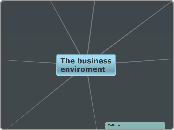arabera Jaco Geyser 12 years ago
279
Ice task 3
Businesses operate in an ever-changing environment influenced by various macro-environmental factors such as technological innovations, economic fluctuations, new laws, and social factors.

arabera Jaco Geyser 12 years ago
279

Honelako gehiago